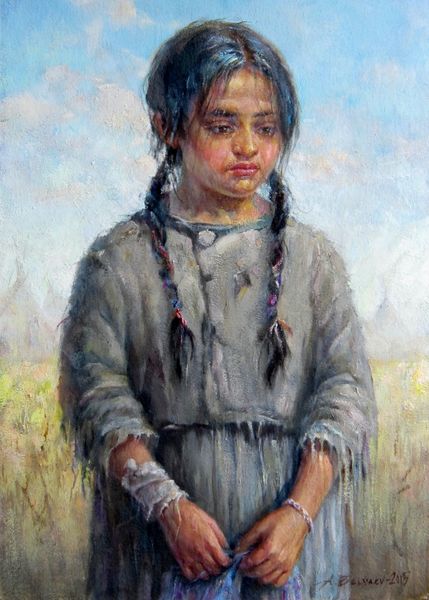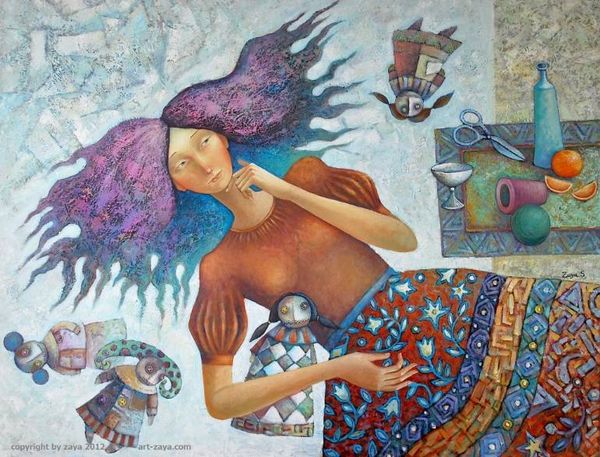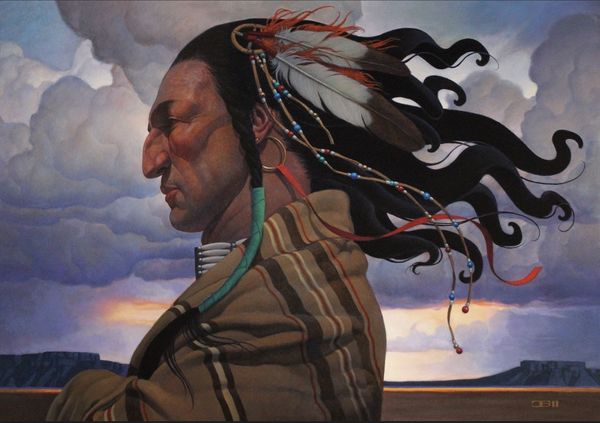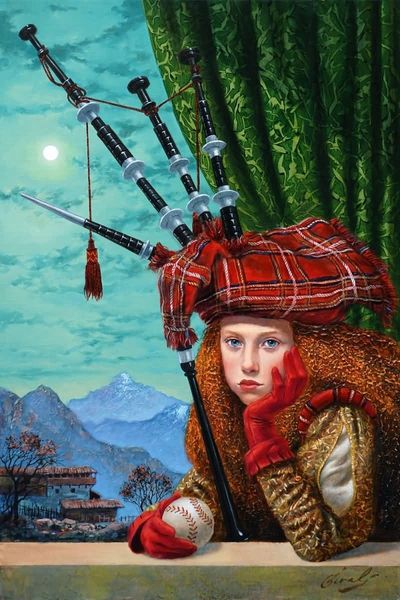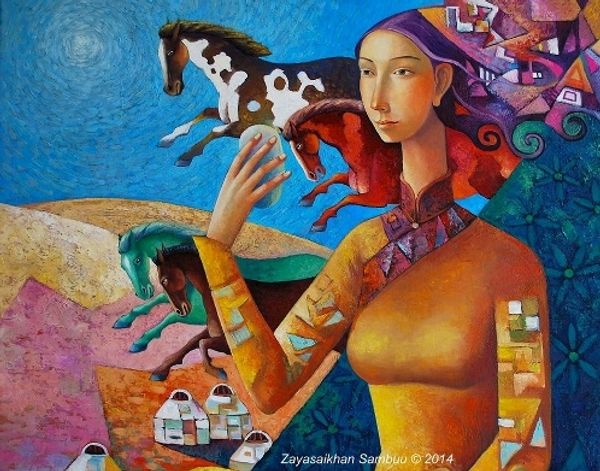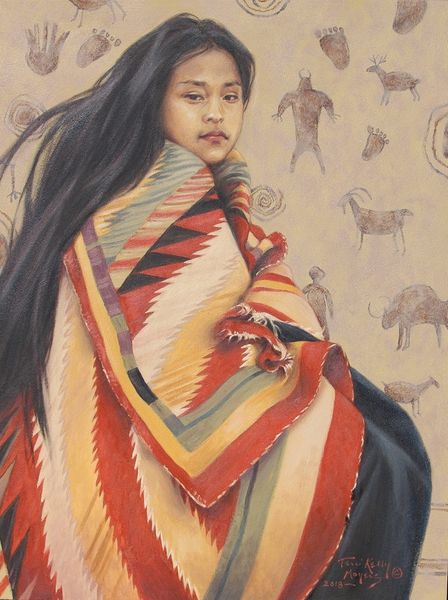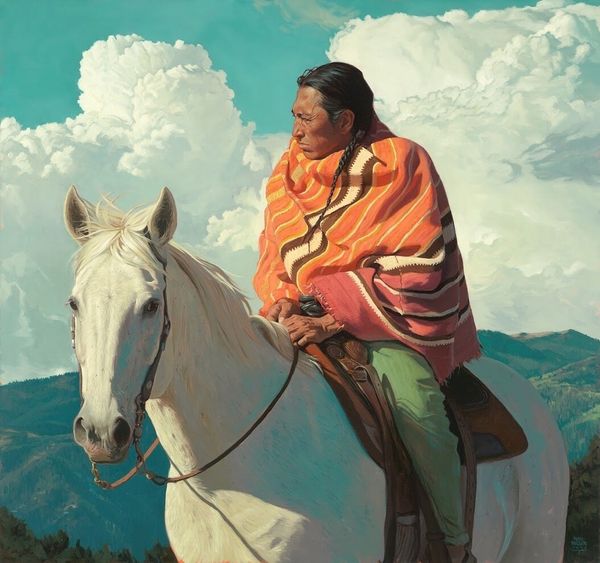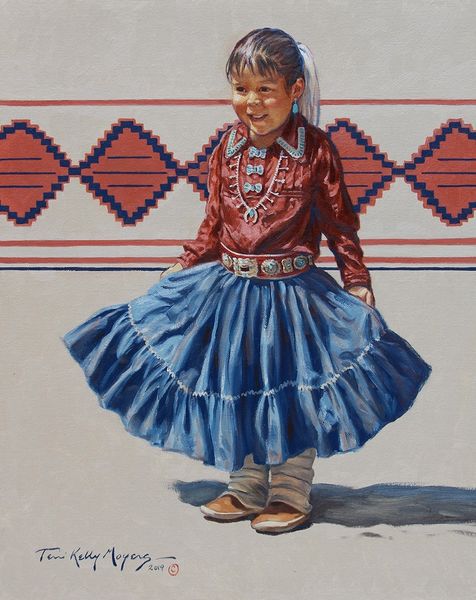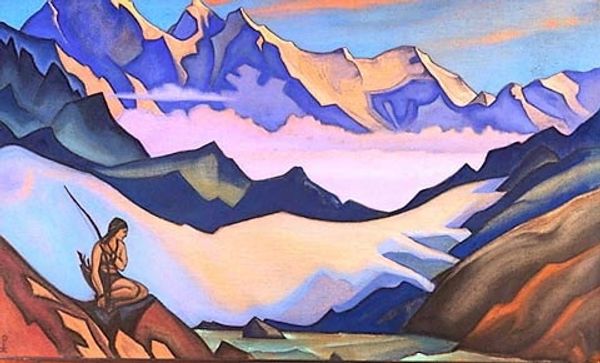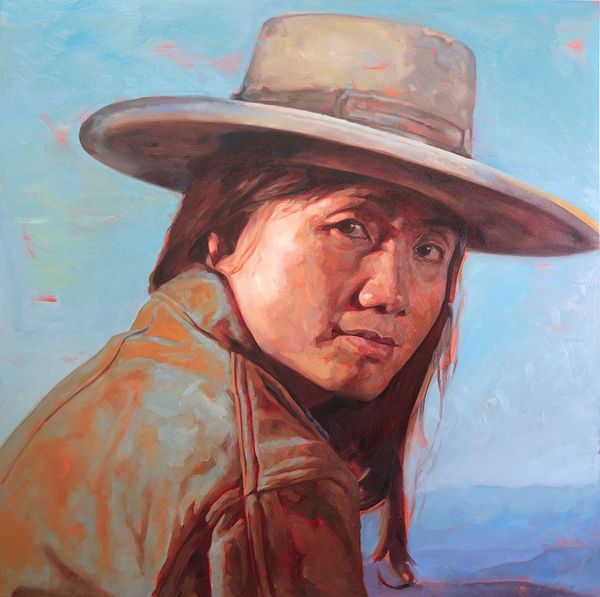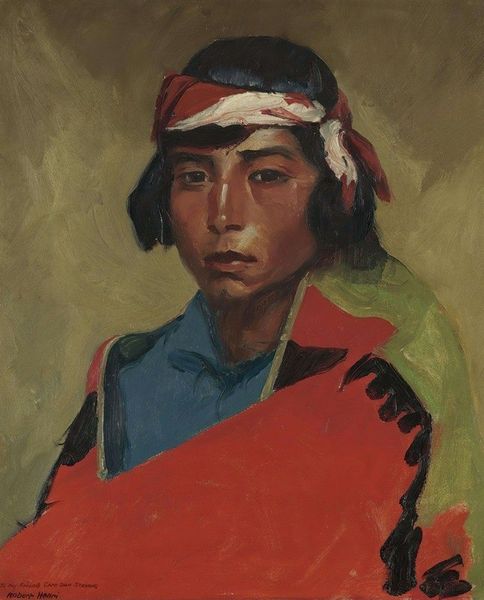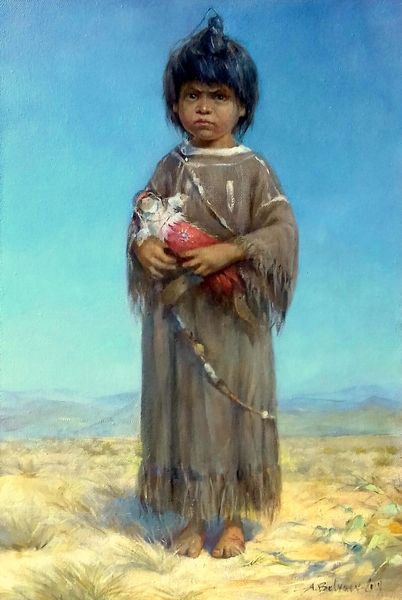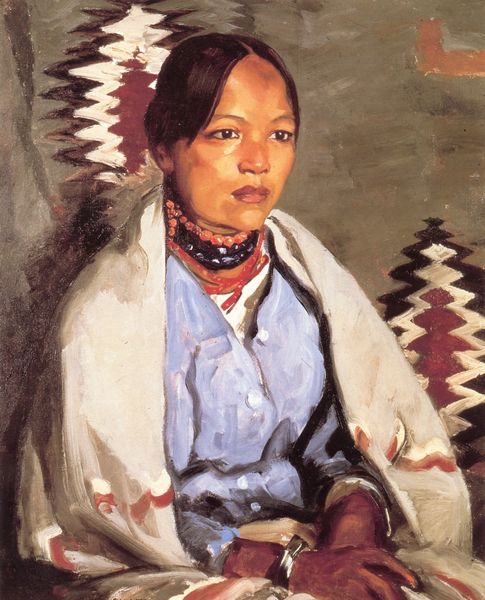
painting, oil-paint
#
portrait
#
contemporary
#
painting
#
oil-paint
#
asian-art
#
landscape
#
painted
#
figuration
#
oil painting
#
acrylic on canvas
Copyright: Zaya,Fair Use
Curator: What strikes me first about this oil painting, "Meditation Road" by Zaya, is the quiet dignity of the central figure amidst that stark landscape. It feels incredibly personal, almost like a devotional image. Editor: The texture of the paint is really working here. You can almost feel the coarseness of the fabric of the clothing and see the work of the hand on that patterned texture on the sleeve and hat. How do those construction elements work within its cultural setting? Curator: Absolutely. I see this piece as a comment on Mongolian identity, particularly in the context of modernization. The traditional clothing, rendered so meticulously, acts as a signifier of cultural heritage, a direct response to cultural erasure often perpetuated by globalization. The landscape echoes the strength and resilience inherent within that identity. The young person seems to wear an amulet of the Buddha, thus signaling inner strength in a historical environment fraught with external conflicts. Editor: It's fascinating how the landscape feels both present and removed. You’ve got that immediate foreground of brushstrokes leading to distant, almost geometric mountains. There's a distinct material contrast there that pushes you into that dialogue between figure and ground, really emphasizing a cultural relationship to the natural materials from which everything, clothes, yak wool, paints, comes. It points to the social conditions required to access them and assemble them. Curator: Yes, and I see the contrast highlighting the subject's role as both an individual and a member of a community rooted in this specific geographic space. Gender obviously comes into play – are we reading this as a portrait of traditional female roles within Mongolian society, perhaps referencing the spiritual and cultural responsibilities held by women? The landscape in the back mirrors not only natural resources and means of survival, but it evokes a sense of power, and perhaps access to meditation and philosophical thought only afforded some people in society. Editor: I agree. And the use of oil paint itself has implications here. Its accessibility speaks to certain societal shifts in Mongolia’s relationship to global materials and markets. That yak wool may no longer be locally sourced; maybe these days it needs to be procured from other vendors in the system. This, in turn, is refiguring artistic production. Curator: So, where do we land in terms of this image as both a statement of cultural identity and a product of material forces? Editor: I am interested in the relationship between global trade of materials in the image production versus its overt symbolism. I think the tension works.
Comments
No comments
Be the first to comment and join the conversation on the ultimate creative platform.
